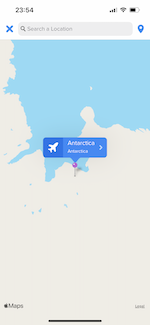Dating in Antarctica? You must be joking. We are, but we aren’t.
While it is true that there are no known native peoples to Antarctica, some people do actually live there at various times throughout the year. You might as well try your luck with dating penguins 🐧.
In reality, outside of a few thousand annual tourists, the only people who live on Antarctica are scientists and researchers who are stationed there temporarily to conduct research. There are a small number of people who help to provide services to those scientists. These people usually stay in close quarters with their fellow researchers and spend most of their time focused on their work.
In terms of socializing, the research stations often have communal spaces where people can gather to eat and relax, but the focus is typically on building a sense of community among the researchers rather than dating or romantic relationships. That being said, dating apps such as Tinder have been cited with helping people to meet in Antarctica, at least one time.
Most research stations in Antarctica are home to small groups of people, but the largest station is McMurdo Station, which has around 1,000 people in the summer. In -17°C temperature, that brings a whole new meaning to a hot romantic summer fling!
Top Cities for Singles in Antarctica
As we mentioned, the chances of you swiping on anything in Antarctica other than the ice forming on your glasses is pretty slim. However, if your dream is to find your true love and move off to the uncharted continent of peace, then here are some places you can try.
- McMurdo Station (United States)
- Marambio Station (Argentina)
- Amundsen–Scott South Pole (United States)
- Eduardo Frei and Villa Las Estrellas (Chile)
- Rothera (United Kingdom)
Top Dating Apps in Antarctica

We cannot say really which are the most popular dating apps in Antarctica because there simply isn’t enough data. What we can say however is that you can use applications which allow you to change your location. Here are a few which do that:
Is Antarctica LGTBQ friendly?
Without knowing for sure, we like to think so. In 1959, the Antarctica Treaty was signed by 12 countries with an interest in Antarctica. The treaty primarily aims to protect the continent from any military activity, preserve its environment, and ensure that scientific research is the primary purpose of any human activity on the continent.
It’s also worth noting that there are guidelines in place to regulate social behavior on Antarctica. The Antarctic Treaty, signed in 1959, includes provisions to ensure the safety and well-being of all people on the continent. The treaty prohibits any activities that are likely to cause harm or disturbance to the natural environment or other people. Regarding human interactions, the treaty stipulates that all personnel must have respect for the environment and its conservation, and they should follow strict rules and regulations to minimize any adverse impacts on the environment.
The treaty has been a success in promoting international cooperation and scientific research, and the parties involved continue to meet regularly to discuss and revise the regulations governing human activities in Antarctica. It seems that the theme of life in Antarctica is coexistence, and we like it!
We’ve learned that LGTBQ humans might not be the only beings in Antarctica seeking M-M or F-F relationships. Scientists have also discovered that homosexuality occurs in penguins as well. There are gay penguins!
In fact, same-sex pairing among penguins is well-documented, particularly in species that form long-term monogamous bonds. Male-male pairs have been observed incubating eggs, building nests, and engaging in other behavior typically associated with male-female pairs. In 2009, two male penguins at the Central Park Zoo in New York City gained international attention for hatching and raising a chick together.
Who knew?




